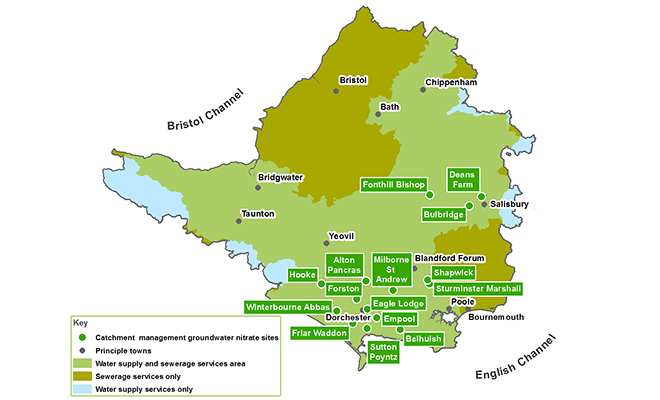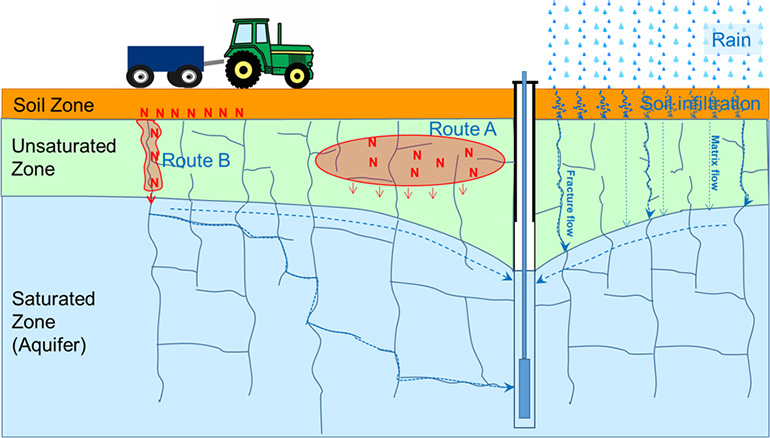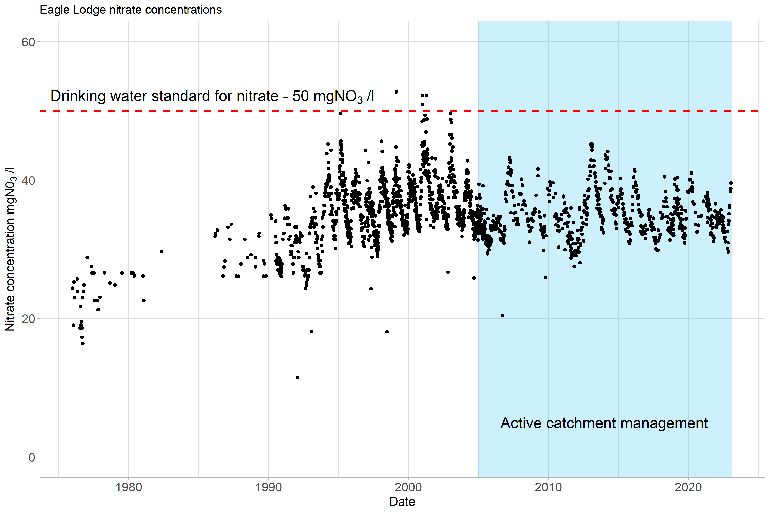- Home
- Our purpose
- Rivers and coastal waters
- Groundwater
Our groundwater catchments
Each catchment has been designated as a drinking water safeguard zone (SGZ) by the Environment Agency.
Within these zones, certain substances must be managed carefully to prevent the pollution of raw water in sources that are used to provide drinking water.
These catchments can be seen on our map.

Managing nitrate levels
Nitrogen (N) must be managed carefully to prevent pollution and improve the raw water quality of our groundwater sources, which are used to supply public drinking water.
The main water quality issue in these catchments is high and rising levels of nitrate in groundwater, caused predominantly by intensive agricultural activities.
Some of the agricultural activities influencing nitrate levels in groundwater include:
- the application of N fertiliser which crops don’t utilise efficiently
- the application of organic manure and N fertiliser in autumn when they are not needed
- crop stubbles being left bare without anything growing over winter
- large areas of intensive winter cereals which are poor at taking up nitrate residue before the N leaching period starts
- late harvesting of crops like maize with limited ground cover over winter
- natural mineralisation of soil N continuing throughout the autumn while soils remain warm and moist until they finally cool down and become biologically dormant during winter
- additional mineralisation of soil N in the autumn, accelerated by the aeration effect of cultivations
- the overapplication of N fertiliser over and above crop demand.
How does nitrate get into groundwater?
If N is not managed carefully, intensive agricultural activities can result in excessive residue being left behind in the soil at the end of the growing season.
During winter approaches, increasing rainfall eventually saturates the soil and the water drains downwards through the soil profile and into the aquifer, carrying the dissolved nitrates with it.
The specific characteristics of the catchment and the underlying geology determine how long these nitrates take to impact raw water quality in the aquifer.

What are we doing about nitrate levels?
By providing the right advice and support, we are influencing farmers to change their agricultural activities to reduce nitrate leaching and improve raw groundwater quality.
We work with the farmers inside SGZs to:
- raise awareness of groundwater quality issues
- advise them on how they can help improve groundwater quality issues
- monitor and test water, soil, crop and manure to help them use fertiliser, pesticides and manure more efficiently
- support and incentivise farmers (where appropriate) for adopting alternative farming practices.
We encourage farmers to grow cover crops to lock up N in the soil before the onset of soil drainage over winter, which reduces the amount that drains into the aquifer.
Some of the farms we work with inside SGZs also have land in the wider Poole Harbour catchment. For land outside SGZs, we work with farmers through our Poole Harbour nitrogen offsetting project.
The graph below shows the nitrate trend at Eagle Lodge source before and after catchment management started.

We’re also working particularly closely with farmers in the Shapwick/Sturminster Marshall catchment to reduce nitrate concentrations in raw groundwater as a priority.
For more information about groundwater catchment management, please email catchment.management@wessexwater.co.uk.
Reducing nitrate loading to groundwater
Shapwick and Sturminster Marshall Enhanced Catchment Management
We have allocated additional funding until March 2025 to support farmers to reduce nitrate losses to meet Environment Agency (EA) targets.
